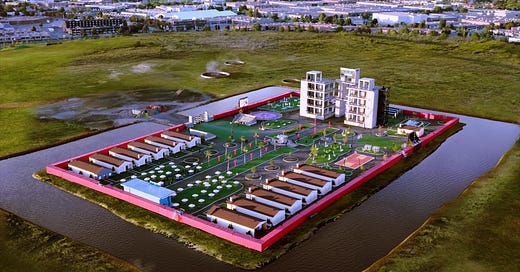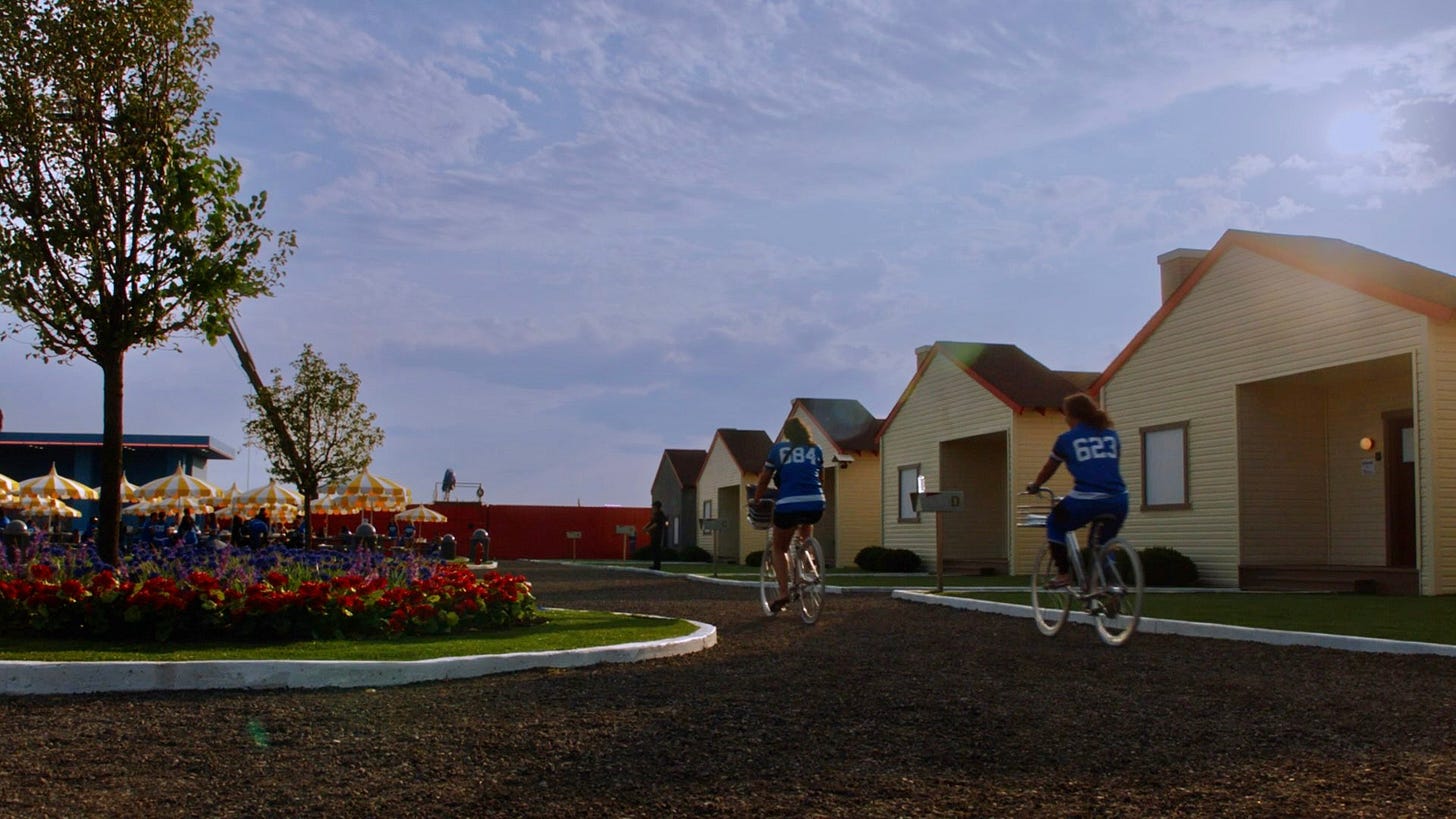My experience living in Mr. Beast's makeshift city
The world's biggest YouTuber created his own small city. Other creators should do the same.
A few months ago, I competed in “Beast Games” against 1,999 others trying to win $5 million. It was the largest game show in history.
I make it decently far in the competition, to the point where I spent a week living in “Beast City” - a massive open-air set that housed 500 of us throughout different points of the series.
While I didn’t win the grand prize, I became convinced that creators (likely YouTubers/streamers) will become the de facto leaders of massive cloud-first living communities. More on my experience and why I believe that below:
Beast City
Beast City was complete with sports facilities, a five-story tower, a cafe, cabin-style housing for 500, and a college-style quad.
Being here felt less like a high-stakes game and more like stepping into a fully-realized experimental society.
It was clearly designed with communal purpose. Sleeping quarters were positioned along the edges, while common gathering spaces occupied the center. This layout was simple but clever: it encouraged natural interactions, chance meetings, and shared moments that felt organic, not forced. Connections formed while we ate breakfast, strategized in small groups, or played sports in between official challenges.
While viewers at home watching Beast Games will remember the psychological twists, the monster trucks, and the private islands, the most enduring legacy of Beast City for the bulk of its residents will be the bonds they formed with other contestants.
As many would remark on Instagram or in groupchats afterwards “other people just won’t understand what it was like.” The bubble we lived in helped us become friends faster. Most folks there shared both 1) a common appreciation for Mr. Beast’s content and 2) a distinct experience participating in the games.
The experience helped reinforce a hypothesis of mine: creators are extremely well positioned to lead IRL experiences that foster organic connection, make money, and help address a loneliness crisis.
Creators should create themed overnight IRL experiences
1 in 5 US adults say they feel lonely every day. This is partially because of the decline of our in-person communities. Jobs are increasingly remote. School is online. Dating is in the DMs. This is not new information.
Our generation barely goes to church any more, but we do tune in to watch our favorite creators every week.
Creators have the distribution and loyalty to create themed IRL experiences and fill them with their fans. This advantage should not be overlooked. Elsewhere on the internet, coliving communities and startup cities attempting to host IRL experiences struggle to aggregate demand. Creators don’t have that challenge.
To some extent, this already happens. Jesser hosts basketball tournaments. The Botez sisters hosted an overnight chess tournament. I predict that these creator-led living experiences will get longer and support more people. It’s now very feasible that 1,000 people who follow a certain creator online could live in the same place for a whole year.
Balaji Srinivasan has a large audience on X where he also writes extensively about tech and Network States. A single tweet he wrote in August about a three month “Network School” pop-up (more on that in another forthcoming post) generated so much demand that we filled the first cohort of 150 people instantly and built a waitlist of 5,000 people with no other marketing.
Large creators will follow suit to host IRL longterm living experiences because it can be very profitable (not to mention, very fun). If they develop/rent a campus where housing units cost them $250-1,000/month, they can easily charge $2-4,000/month by including basic shared amenities and themed programming. Fans will pay the premium to live near a community of like-minded folks. That margin is a great business model, and I can think of a few obvious examples:
I imagine that Bryan Johnson will build a longevity-focused living community that prioritizes great sleep conditions and healthy foods.
Video game creators will might creating the ideal configuration for gaming with each other with e-sports arenas and gigabit internet connections.
Musicians can host songwriting camps and longer-term housing organized around recording studios so that they can make songs whenever genius strikes.
We’re happiest surrounded by people we admire or love. YouTubers and other creators with large, engaged audiences are best positioned to use their internet audiences to aggregate demand into themed massive living experiences that will profitably help participants feel the same belonging we all crave.
If you’re a creator hoping to do something like that, let me know how I can help.






A big issue I see here (I think about these communities a lot) is that as "retreats" or temporary spaces alone it can be expensive. Add in the profit motive and they're sure to be expensive. Then, the only people who can afford it will tend to be wealthy already. These are exactly the kind of people who buy their way OUT of community and use these "retreats" as a dip back in.
Community isn't an interest group. Sure, an influencer will have an easier time summoning a group to them (one of my favorite YouTubers constantly has people in the comments begging him to choose a location so everyone can go make an urban utopia together, and he refuses for good reason). But having a common interest isn't what community is about, even if it makes an initial connection easier. It's a catalyst for trust, but it isn't how trust is built. Communities have to exist when there's disagreement, and to have that you need interdependence. I don't believe any of these creator-communities will actually foster that. Like this MrBeast one, and even Cul de Sac in Tempe, AZ, they look more like college dorms than anything else. College dorms do not foster interdependence. They do foster connection, which is great, but they are not fundamentally designed to be lasting communities.
Like Brian Johnson extending his life and missing the point of living, I think these creator communities will try to "biohack" connection and miss the point of community.
I’m not too familiar with some of the individuals and trends you discuss here, but I feel there are many parallels today with the interest in communes and group lifestyle experiments during the late 60s and early 70s, albeit with a wider range of interests and ideologies this time around. People are feeling a potent mix of disillusionment and enchantment, and the line between cult and culture is blurry. It might be a lot of fun, if people stay honest and safe.